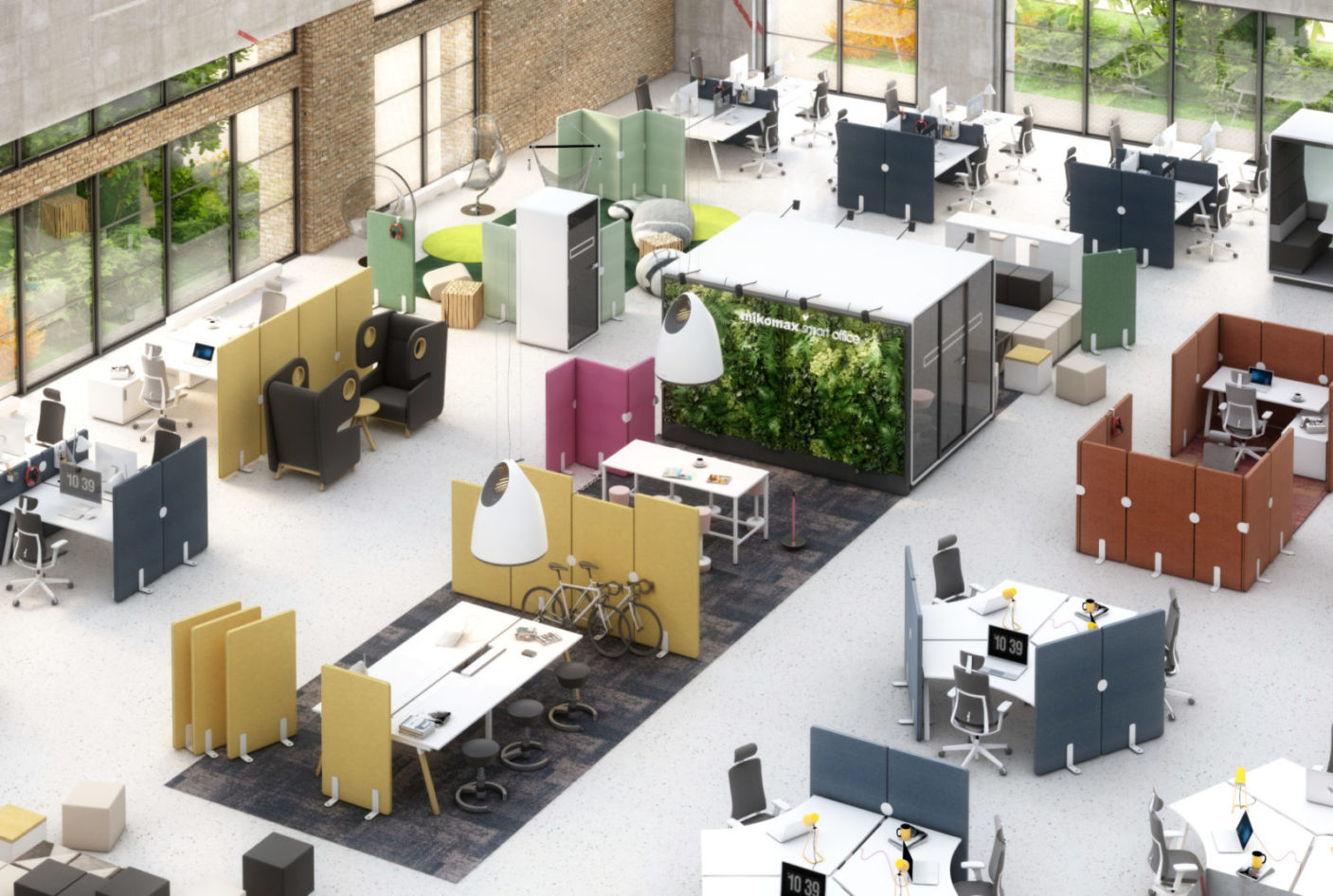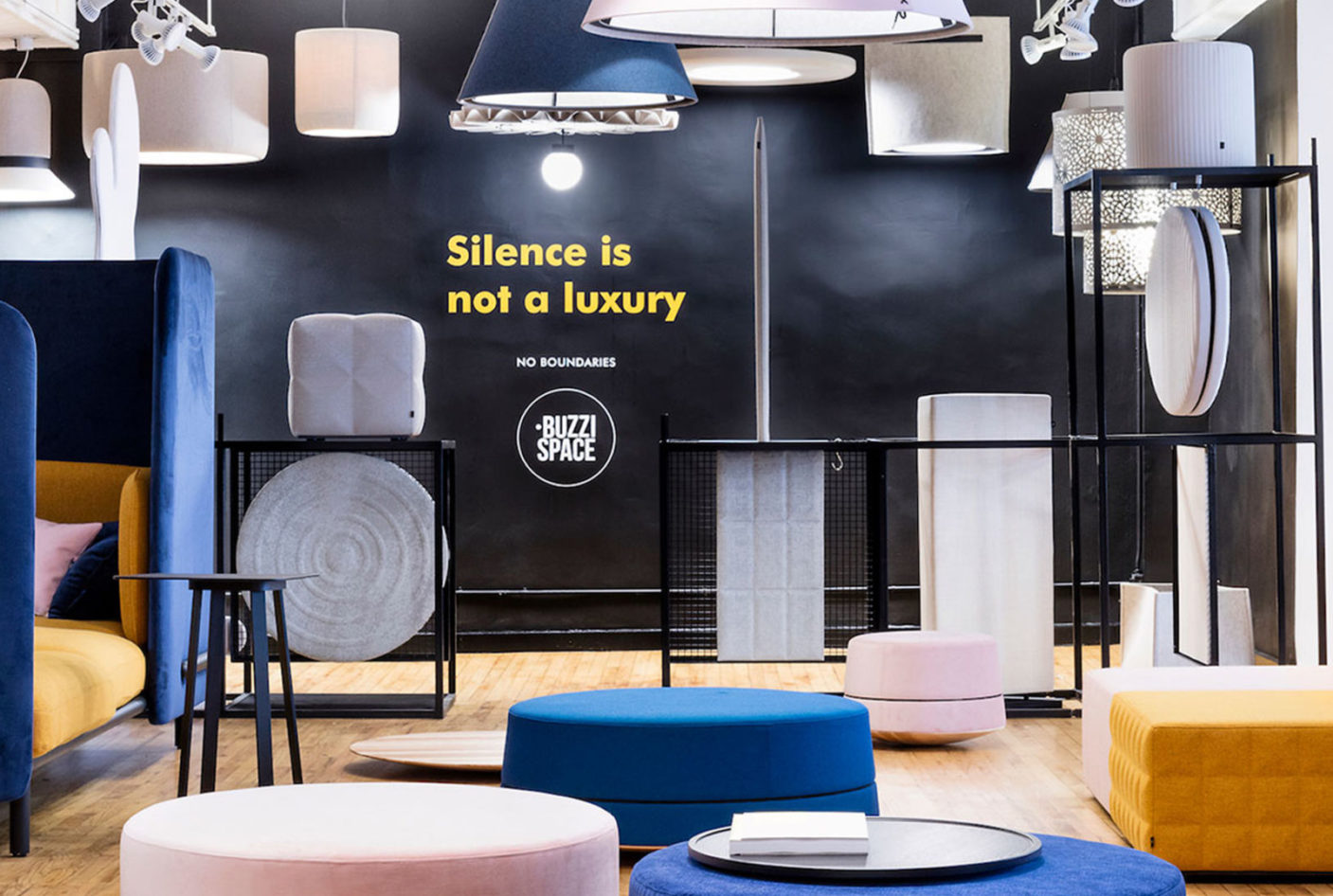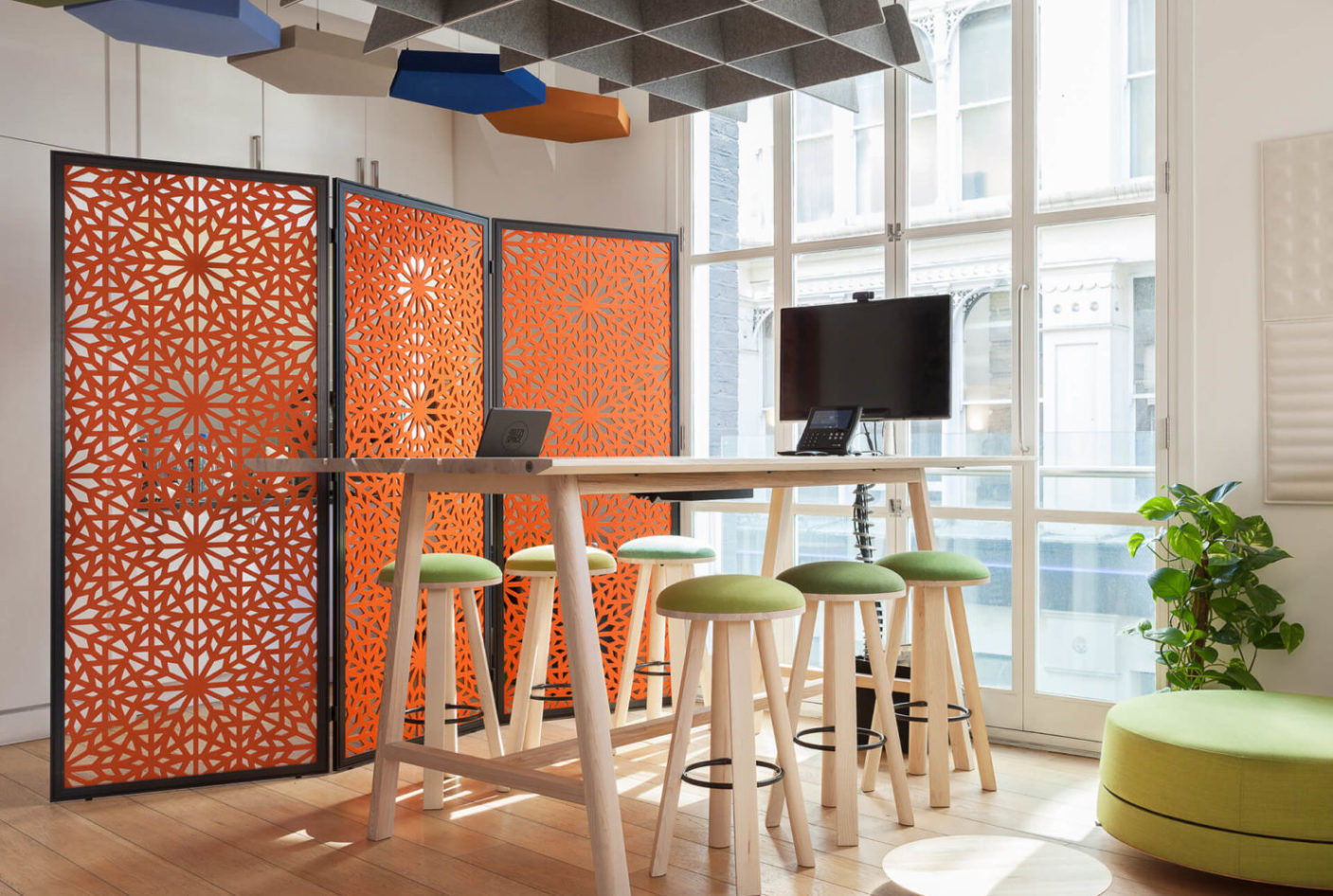
The creative and collaborative nature of the new ways of working have given rise in recent years to much more flexible offices that include the latest facilities such as collaboration areas, flexible workstations, biophilic design, and connected building technology. While these spaces are appealing from a visual point of view, an important question is whether spaces that combine concentration and collaboration areas achieve acoustic comfort.

Acoustic comfort in the workplace
Acoustic comfort is one of the most influential aspects of employees’ health and well-being. It belongs to one of the seven categories of wellness called concepts (air, water, nourishment, light, fitness, comfort and mind), with which WELL certification guarantees the health of people living in buildings.
In offices, noise derives from different sources, such as external noise pollution, traffic or nearby construction work, electronic devices like computers, printers, or air conditioning and ventilation systems. However, the most common source of poor acoustics is frequent or constant distraction coming from conversations. When employees are distracted, they are less productive, make more errors, they are less satisfied in their work and as a result irritability and stress levels are increased. The Wall Street Journal recently cited a study found that once distracted, it can take 23 minutes for the average employee to regain concentration on a task.

Effective workplace acoustics are feasible without compromising design!
Effective workplace acoustics should be one of the main priorities of every design team in order to create acoustically optimized spaces that focus on the comfort of those that use them. A well-designed acoustical workplace will make employees feel comfortable.
As the trend towards designing more human centric environments continues to develop, designers should focus on the latest advanced solutions and the applicable building standards that support acoustic optimization.
Today’s interior products are addressing more than sound management, reducing echoing and reverberation issues while enhancing other aspects of interiors, such as lighting and aesthetics. Conventional sound-absorbing products, such as acoustical ceiling tiles or wall panels, were commonly used to tackle acoustic comfort issues and minimize reverberation noises, often to the detriment of aesthetics.
However, recognizing the challenges of creating environments with different levels of privacy in the same space in compliance with aesthetics, modern and interesting acoustical solutions were developed. Lighting systems, work zone dividing panels, ceiling panels with the most frequent being baffles and cloud systems, or acoustic furniture, are solutions that offer many advantages: they address noise and reverberation issues and deliver a cohesive aesthetic.

Finding suitable solutions
When selecting the optimal solution, it is critical to detect the source of the acoustic problem and define its type: 1) reverberation and echo, 2) background noise, 3) lack of privacy. In 99% of the cases reverberation is responsible for the noise problems in workspaces instead of echo.
In order to tackle reverberation and echo, acoustic panels and other flexible acoustic elements, made from soft, absorbent materials, are the most suitable options to reduce sound and noise transfer. To remedy issues concerning background noise, there is a variety of options from room dividers to acoustic panels and sound absorbing lighting products. To deal with issues regarding visual or acoustic privacy there are solutions such as phone and meeting booths or free-standing elements to divide spaces and limitate sound transfer between specific areas. Of course, different activities require different solutions, so choosing the most appropriate solution depends always also on the kind of each space whether it is an open plan office, a meeting room, a lobby, a restaurant etc.
Photographic material: Mikomax smart office, BuzziSpace